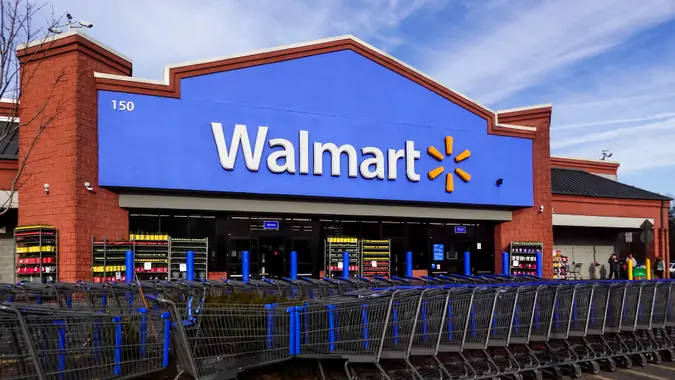Humphrey Yang: Is It Cheaper To Lease or Buy a Car?

Commitment to Our Readers
GOBankingRates' editorial team is committed to bringing you unbiased reviews and information. We use data-driven methodologies to evaluate financial products and services - our reviews and ratings are not influenced by advertisers. You can read more about our editorial guidelines and our products and services review methodology.

20 Years
Helping You Live Richer

Reviewed
by Experts

Trusted by
Millions of Readers
One of the oldest discussions in the auto world is whether it makes more sense for consumers to lease or buy a car.
In an era when the average new car monthly payment is $729, it seems like leasing might be the obvious choice. However, to get the true mathematical answer, you’ll have to factor in a wide number of variables, some of which are easy to overlook.
Humphrey Yang, a financial personality with over 1 million YouTube followers, posted a recent video to help viewers answer that very question. Here are the insights offered by Yang, along with some additional advice on how to get the best deal.
Why Does It Cost Less Per Month To Lease?
While not the same thing, leasing a car is similar to renting it for an extended period of time, typically three years. Instead of putting equity into a car you will keep after you pay it off, you’re required to hand back the car to the leasing company at the end of your lease term — unless you choose to purchase it at that point for the predetermined residual value price.
Yang notes that a car lease payment has four components:
- Depreciation
- Interest/finance charge
- Taxes
- Fees
Since you’re not financing the entire value of the vehicle, lease payments are almost always cheaper than finance payments. However, this doesn’t mean that the total cost you’ll pay for the vehicle will be lower, particularly if you choose to buy your car at the end of your lease.
Hypothetical Examples
In his video, Yang uses the example of a Toyota Rav4 Hybrid with an MSRP of $31,475.
Lease-Buyout for 3 Years vs. Finance/Purchase for 5 Years
On the lease side of the column, Yang assumes a $3,000 down payment and a $21,088 residual value. This will result in 36 monthly payments of $394. If you choose to buy out the car at the end of the lease, your total cost will be $38,272 when factoring in the down payment, residual value and all monthly payments.
For the financing calculations, Yang assumes the same $3,000 down payment, a 6% interest rate and a 60-month term. This will result in a much higher monthly payment of $551. However, this isn’t the whole picture. The total cost of the car under the purchasing/finance option will be just $36,060, or more than $2,000 cheaper than if you used the lease-buyout method.
Lease-Buyout After Three Years vs. Purchase/Finance Over Three Years
To make more of an apples-to-apples comparison, Yang shortens the financing term to 36 months, the same as the lease. Under that scenario, monthly payments jump up to a less manageable $866, but your total net cost also drops to $34,176, or more than $4,000 less than the lease-buyout option.
Lease and Return After Three Years vs. Sale After Purchase/Finance for Three Years
Assuming you could sell the car for $26,124 at the end of the three-year term in both cases, purchasing still has a clear mathematical advantage. The $34,176 cost to finance and purchase a car over three years is offset by the $26,124 sale, resulting in a total cost of $8,052.
But under the lease scenario, your total payments would add up to $38,272 — $3,000 down payment, $14,184 for three years of monthly payments, and $21,088 to buy the car at the end of the term. If you turned around and sold the car for $26,124, it would result in a net cost of $12,148.
Mileage Penalty
If you buy a car outright, you can drive it for as many miles as you want. But if you are leasing, you’ll normally have to stick to 10,000, 12,000, or occasionally 15,000 miles per year. If you continue driving beyond that limit, it will cost you anywhere from 10 cents to 25 cents per additional mile.
Reasons Why Leasing May Still Make More Sense
In spite of the total cost mathematics, there are still a number of reasons why leasing might be a better option for you.
First, you might simply prefer a lower monthly payment that fits in better with your cash flow, even if it costs you more in the end.
Second, you might enjoy getting to drive a new car every three years. In addition to the excitement of continually driving new vehicles, they will also always be under warranty. On top of the warranty, many leased vehicles also come with free maintenance, and this can save you a lot of money, especially if you are leasing a luxury vehicle.
Third, if you run your own business, you may be able to get a tax break if you lease your vehicle at least partially for company purposes.
Summary
According to Yang, financing is best if you are one of these types of buyers:
- You want the best financial option
- You don’t mind driving the same car for a number of years
- Want the peace of mind of owning a vehicle
- Don’t like the limitations of leasing a car
On the other hand, Yang says that these types of consumers are better suited for leasing:
- You want a new car every three years or so
- You want a nicer car for a lower monthly payment
- You can stick to mileage limits
- You own a business and can take tax deductions
More From GOBankingRates
 Written by
Written by  Edited by
Edited by 

























